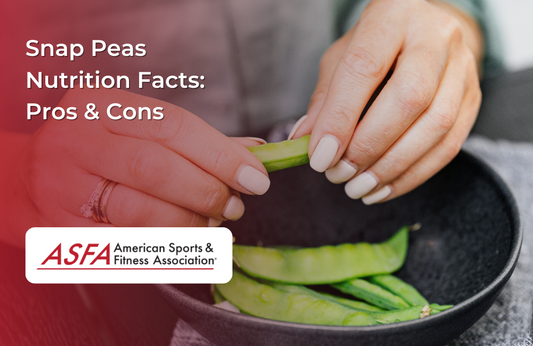The hip flexors are a group of muscles that allow the hip to bend and lift the leg toward the torso. These muscles include:
-
Iliopsoas (Psoas Major and Iliacus)
-
Rectus Femoris (Part of the Quadriceps)
-
Sartorius
-
Tensor Fasciae Latae (TFL)
Tight hip flexors can lead to discomfort, reduced mobility, and poor posture. Stretching these muscles regularly can improve flexibility, prevent lower back pain, and enhance movement efficiency.
How To Stretch The Hip Flexors: Best Methods
Understanding the Hip Flexors
The hip flexors are a group of muscles that play a crucial role in our daily movements, including walking, running, climbing stairs, and even simple actions like bending and lifting. These muscles are located in the front of the upper thigh and are responsible for flexing the hip joint, which allows us to bring our legs forward and upward. The primary hip flexors are the iliacus and psoas major, which work together to flex and stabilize the hip and pull the thigh and torso together. The rectus femoris helps with hip flexion and knee extension, while the sartorius helps flex and externally rotate the hip and flex the knee.
The Importance of Hip Flexor Stretches
Hip flexor stretches are essential for maintaining flexibility and mobility in the hips, as well as preventing injuries and alleviating pain. Tight hip flexors can lead to a range of problems, including lower back pain, hip pain, and limited mobility. Regular stretching can help to relieve tension in the hip flexors, improve range of motion, and reduce the risk of injury. Additionally, hip flexor stretches can help to improve posture, balance, and overall athletic performance. By incorporating hip flexor stretches into your daily routine, you can keep your hips healthy, flexible, and strong.
1. Kneeling Hip Flexor Stretch
-
Kneel on one knee with the opposite foot planted in front at a 90-degree angle, keeping the knee bent.
-
Ensure the right foot is flat on the floor while kneeling.
-
Ensure the left foot is flexed upwards while pressing the left calf and thigh into the floor to enhance the stretch.
-
Keep the torso upright and gently push the hips forward.
-
Hold the stretch for 20-30 seconds, then switch sides.
Tip: Engage the glutes to deepen the stretch and prevent lower back arching.
2. Standing Quad and Hip Flexor Stretch
-
Stand on one foot and grab the opposite ankle, pulling it toward the glutes.
-
Keep the knees close together and push the hips forward slightly. This stretch targets the hip flexor muscles, which can become tight from prolonged sitting.
-
Hold for 20-30 seconds and switch sides.
Tip: Keep the core engaged for balance.
3. Butterfly Stretch
-
Sit with the soles of the feet together and let the knees fall outward.
-
Press the knees toward the floor while keeping the back straight.
-
Hold for 30 seconds to improve hip flexibility.
This stretch enhances hip mobility by targeting the hip flexors and surrounding muscles, helping to prevent tightness and weakness that can lead to pain and injury.
Tip: Avoid rounding the spine; sit tall for a deeper stretch.
4. Lizard Stretch
-
Start in a lunge position with the front foot flat and both hands inside the foot.
-
Lower the back knee to the ground and press the hips forward. Position the left leg so that the knee is directly above the ankle, ensuring a proper stretch.
-
Hold for 30 seconds, then switch sides.
Tip: Keep the chest lifted and avoid collapsing into the shoulders.
5. Pigeon Pose Stretch
-
Begin in a seated position with one leg bent in front and the other extended straight behind.
-
Lower the hips toward the floor, feeling the stretch in the hip and glutes. This stretch specifically targets the left hip when the left leg is bent in front, helping to improve flexibility and relieve tension.
-
Hold for 30 seconds before switching legs.
Tip: Keep the back leg extended straight to avoid excessive strain.
Additional Tips for Loosening Tight Hip Flexors
-
Perform dynamic movements like leg swings before workouts. Dynamic movements can help alleviate hip flexor pain by loosening tight hip flexors and improving mobility.
-
Incorporate core exercises to improve pelvic stability.
-
Avoid prolonged sitting by taking movement breaks throughout the day.
-
Strengthen the glutes and hamstrings to balance hip flexor tightness.
Conclusion
Stretching the hip flexors regularly improves mobility, reduces discomfort, and supports overall movement efficiency. Incorporating these stretches into a daily routine can help maintain flexibility and prevent tightness caused by prolonged sitting or intense exercise.
FAQs
How often should I stretch my hip flexors?
Stretching daily or at least 3-4 times per week helps maintain flexibility and prevent tightness. Incorporating hip flexor exercises into your routine is also crucial for maintaining hip flexibility and strength, which can prevent pain and injury.
Can tight hip flexors cause lower back pain?
Yes, tight hip flexors pull on the pelvis, leading to poor posture and lower back discomfort. The hip flexors are connected to the upper leg bone, which is critical for understanding hip mobility and preventing injuries.
Should I stretch before or after exercise?
Perform dynamic movements before exercise and static stretches after workouts to improve flexibility.
How long does it take to loosen tight hip flexors?
With consistent stretching and mobility work, noticeable improvements can be seen within a few weeks.
Can strengthening exercises help loosen hip flexors?
Yes, strengthening the glutes and core muscles helps reduce reliance on the hip flexors, promoting better movement patterns.





